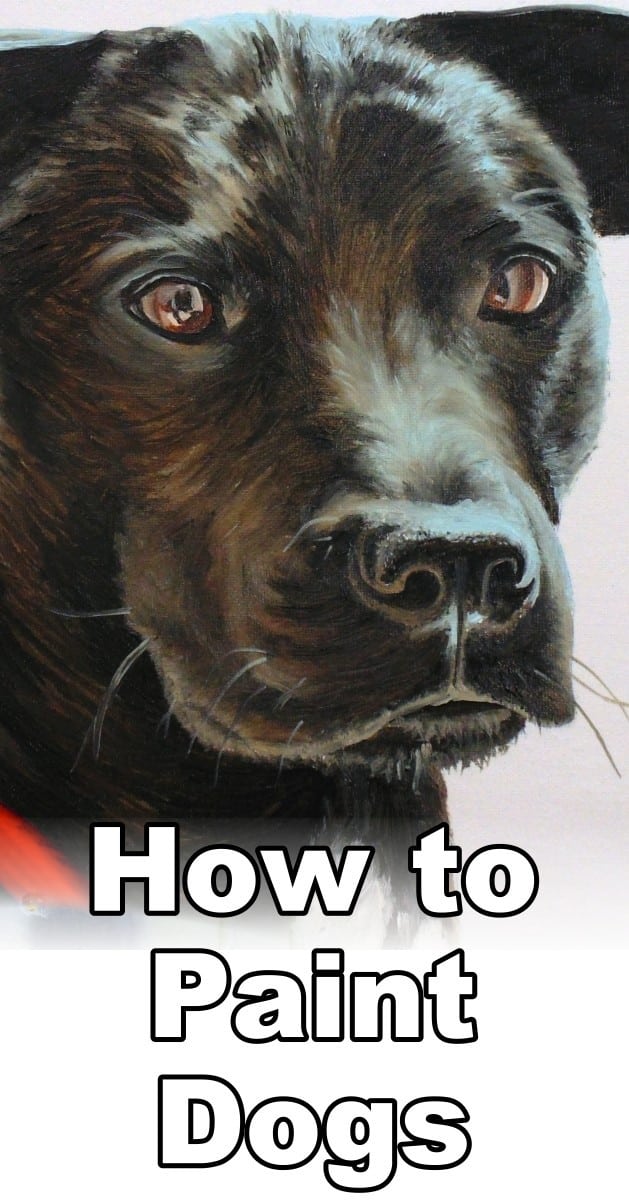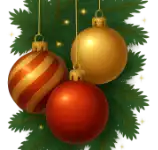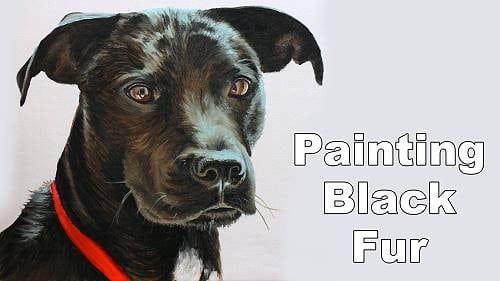Short Class Video
Class Tutorial
People always struggle to paint black hair so today we will paint a cute black haired dog. In the process I will be able to show you how easy it really is to paint black haired animals.
What Colours Do We See?
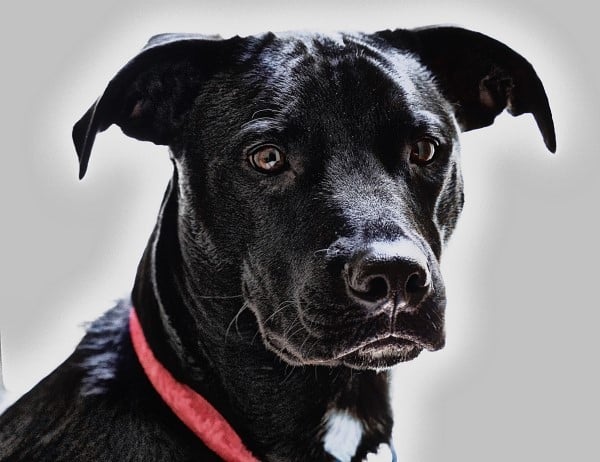
When painting you always need at least three colours in order to make an object appear three dimensional.
You need a mid tone, highlight as well as a shadow colour.
When painting black hair we can start with black paint as the shadow colour. No worries.
The problem comes in when we try to mix the mid tone and highlight colours.
Our first reaction is to add white to the black in order to lighten it.
If we do that though, we will end up with an animal that appears grey and not black.
I think you will agree that the dog we are painting today is certainly not grey.
The secret then is to look very carefully at black hair.
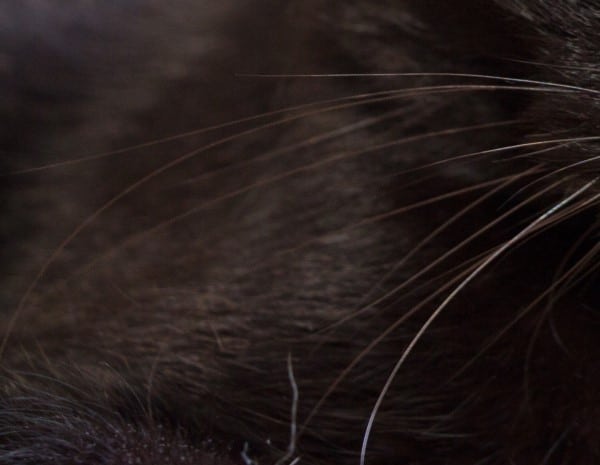
Black hair is seldom pitch black. Normally it is actually a very dark brown.
You can best see this in the mid tone areas, especially when the hair is in sunlight.
Another factor influencing the colour of black haired animals is that they are constantly outdoors.
A fine dust settles in their coat further increasing the brownish appearance of the hair.
So in order to mix a realistic mid tone for your black haired animals, look for the subtle underlying colour in the hair and play that colour up. More often than not it is a brown colour.
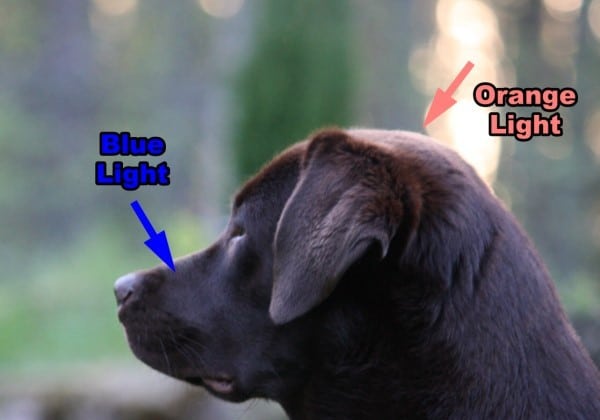
Now let’s figure out what we need to do in order to mix the highlight colour of the dog.
The secret here is to realise that hair is reflective. No matter what colour hair you have. If you walk into a room with say a green light your hair will take on a green tint.
The same happens with animal hair. If our black haired dog walked into the green room with us, it’s coat would also take on a green sheen.
This sheen is most noticeable in the highlight areas because this is where the most light is being reflected off the hair.
So the trick when mixing the highlight colour for our black haired dog is to look for the colour of the light being reflected off it’s coat and mix that colour.
In the dog we are painting today it is light blue, which tells us the dog is probably outside.
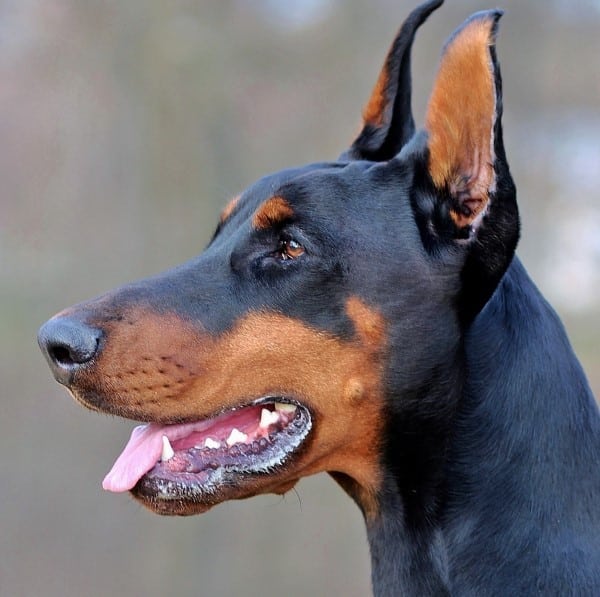
Now that we know what colour to mix for the highlight, mid tone and shadow, we can also look out for other colours like distinct Brown, yellow or white patches of hair. We would then mix these colours separately.
Let’s move on to learning how to do the actual painting of the fur.
Painting the Dog
Paint the Hair
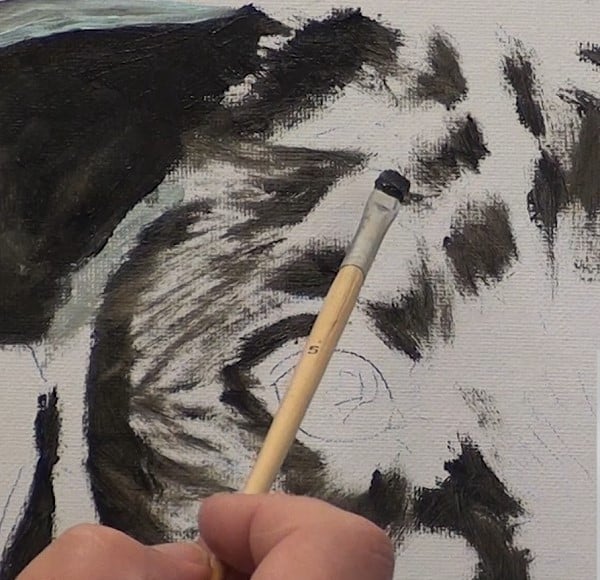
This dog has short hair so we will only deal with short hair in the tutorial.
If you want to learn how to paint longer hair, you can follow my Yorkshire Terrier painting tutorial.
To paint short hair like this I use a standard bristle brush and a chopping motion to lay in the colours.
To save myself a lot of brush washing, I will block in the one colour in all the areas where I see it. I can then wash my brush and move on to the next colour, and so on until the canvas is covered.
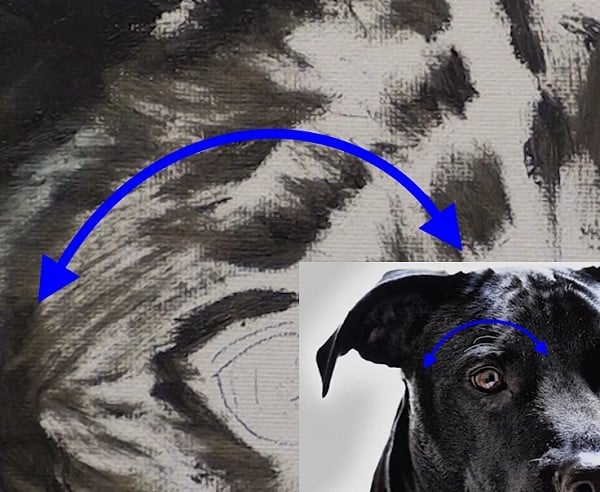
You can do this for the whole animal if you are painting Alla Prima or you can paint it section-by-section if you prefer.
As you chop in these colours, lay them in broader than what you see it on the reference.
Also make sure that your brush strokes follow the direction of the hair at all times.
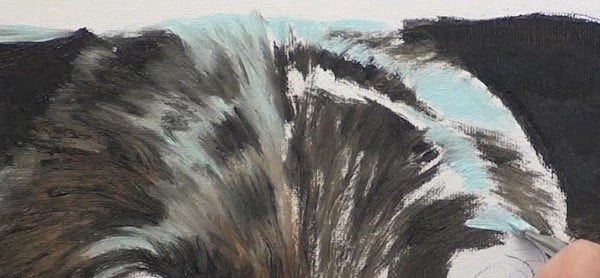
Then when one colour is blocked in, start to do the same with the next colour.
As you chop this next colour in make sure to lay it in broader as well.
Where you are laying down paint next previous colours, vary the length of your strokes. This will give you a random hair like effect.
As you continue to lay in the various colours the canvas will gradually fill up giving a lovely realistic hair effect.
If the canvas is still showing through in an area just add extra layers of hair until you can’t see the canvas anymore.
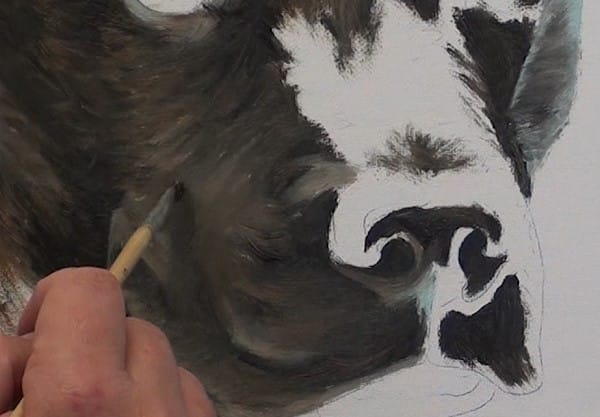
When you have a large area to cover, like on the forehead, use a larger bristle brush. In areas where more detail is required, like the mouth area, move over to a smaller bristle brush.
In other words, use a brush that will allow you to work quickly, but accurately.
The length of your chop strokes should match the length of the hair. Longer strokes on the forehead, very short strokes on the bridge of the nose.
Painting the Eye
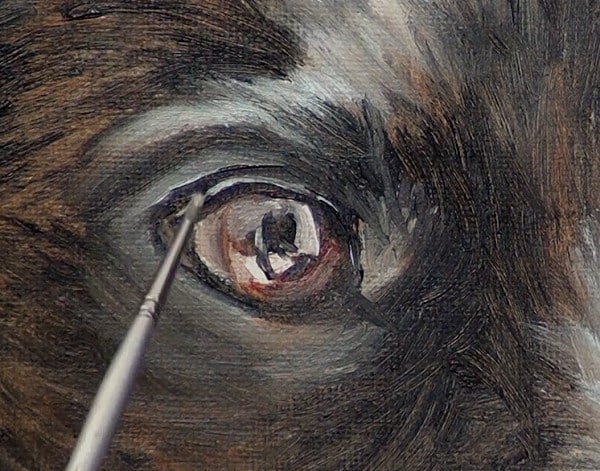
To paint the eye, ignore the reflections in the eye. Look past them to paint the eye as though there are no reflections first. Then come back to add the reflections in the eye.
Pay close attention to the area around the eye.
Animals also have eyelids, eyebrows, tear ducts and so on. Find them and paint them in.
In the nose and eye area I will move over to using a fine liner in order to work more accurately. Remember the eyes are the focal point in a portrait so you need to paint them as accurately as possible.
Painting the Nose and Mouth
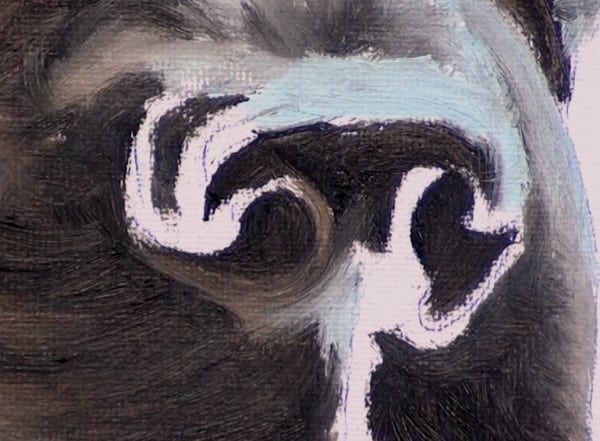
The nose is a series of continuous shadings so you will have to look very carefully to place the correct colours and the correct tonal values in the correct places.
From there you look to see how they fade into each other.
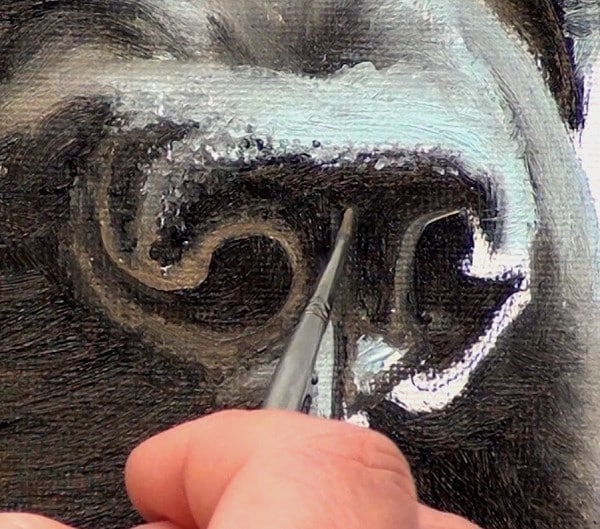
In order to paint the dimples on the nose I use the tip of a fine liner to tap light dots the dark areas and dark dots into the light areas.
Because the nose is shiny and wet, look how much light is reflecting off the top face of the nose.
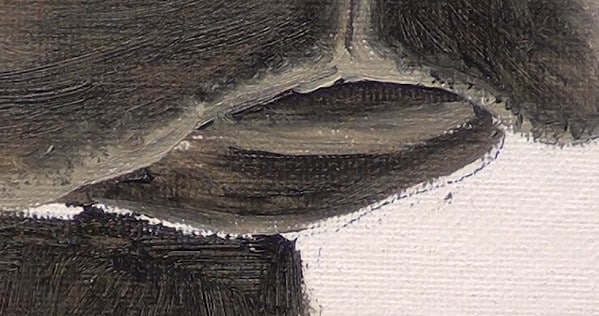
In the mouth area, ensure sure the bottom lip is darker than the top lip to show that the top lip is casting a shadow on the bottom lip.
Painting the Neck & Collar
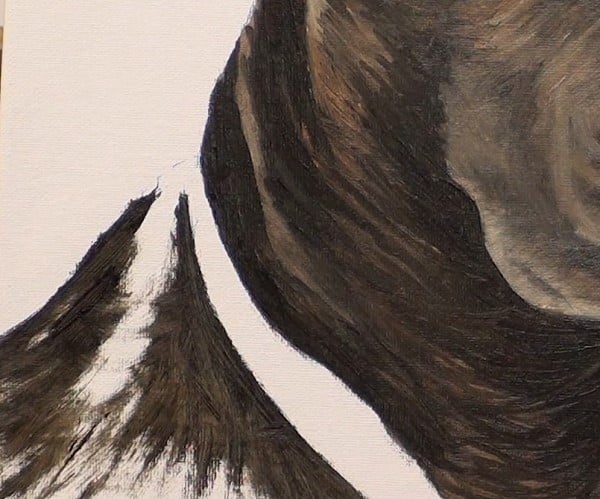
As you move down towards the body, you can gradually work rougher and less detailed.
This less detail forces the viewer’s eye to move towards the face where there is more to see.
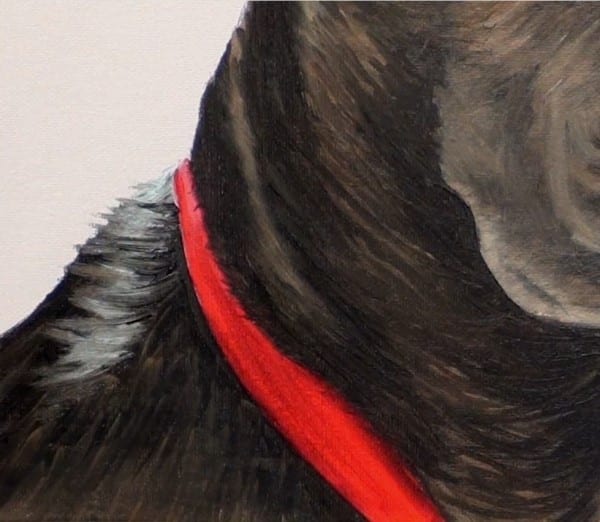
For the same reason I added as little detail into the collar as I could get away with.
In order to make it sit naturally on the dog I did however use a soft Filbert brush to carefully had a few overlapping hairs over the collar.
Lastly I used a rigger brush and very thin paint to add the whiskers and a few detail hairs here and there.
Notice how lovely and shiny the dogs coat looks with all that light reflecting off it.
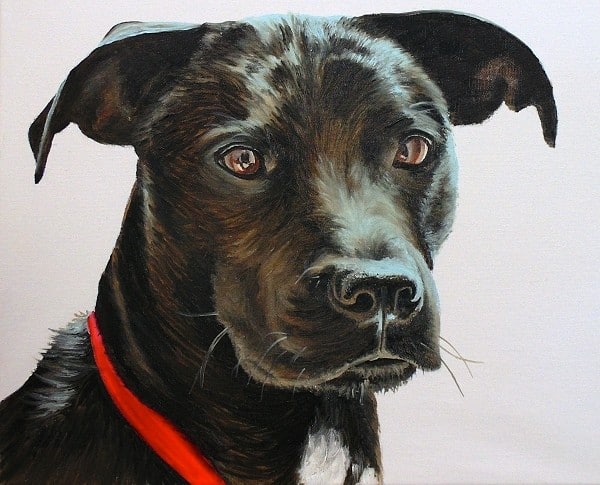
Click the button below to view the real time follow along version of this class:
Pin Me
